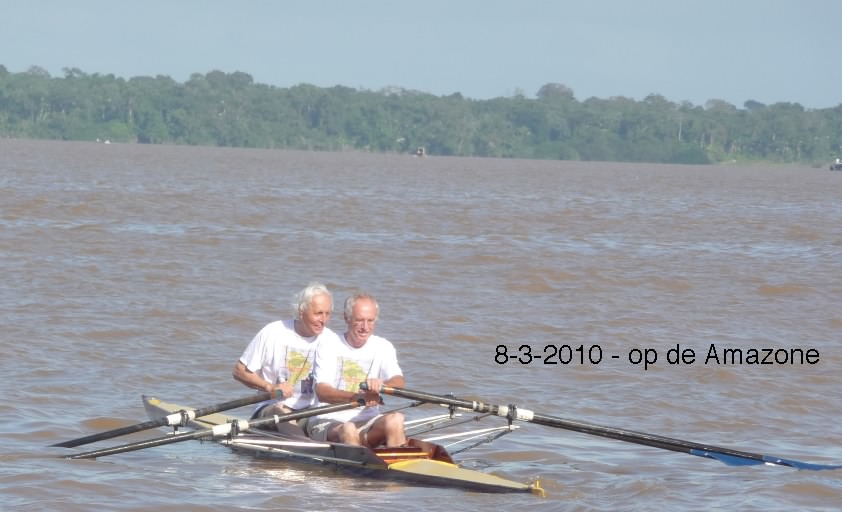Walking through the exhibition "Colonial war,
1945-1949" (Dutch Resistance Museum, Amsterdam; 26th of November, 2015 /
3rd of April, 2016), two thoughts kept coming to my mind: Firstly, the notion
how lucky I was never to have been in the position of those Dutch soldiers that
had to shoot Indonesian villagers, mostly young men fighting for independence.
Secondly, an awareness of what the photographs and interviews of the exhibition
did nót show: that the cruelties of this war were related to and tolerated by the
widespread feeling of superiority among the Dutch.
An ingrained colonial attitude of ~300 years of disrespectfulness
towards the "inlanders", the native Indonesian people, had created a
condition in which the atrocities could be admitted. Some 150,000 Dutch soldiers
and officers, who had just experienced the German occupation in the
Netherlands, had no clue about colonial relationships and only knew that the
country was "our colony" (in dutch: "ons Indië") and that
the Indonesian people were inferior.
 |
The
exhibition showed the cruelties of the colonial war, but not that what induced
it: the feeling of superiority and the disrepectfulness by the Dutch colonists towards
the Indonesian people.
We will probably read more about how this colonial
attitude with its lack of respect has induced the reciprocal cruelties from Rémy Limpach, whose thesis will appear later this
year. And probably also from the study about Indonesia of David van Reybrouck (the
Belgian writer of "Congo"), which he announced (in dutch) when opening the
Academic Year 2015-2016 at the Radboud University (Nijmegen).
And perhaps, on a more personal basis, from the
letters (in french) of my mother as published in the Blog Postume. The letters reflect the self-evidence with which a Dutchman and
Swiss woman install themselves as newlyweds in the colonies, in the village Kebumen on Java.
9th Edition
(1891) of the Max Havelaar by Eduard Douwes Dekker. The book was given to me by
my grandfather, who urged me to read it.
A reminder
of colonial history.
1860. Publication of
the "Max Havelaar". According to Pramoedya Ananta Toer (1925-2006) it
was "the book that killed colonialism", because of its accusation of
expoiting the Javanese people.
Sukarno cited the book as an inspiration in his
plea for independence. After all, one of his teachers was Ernest Douwes Dekker,
whose great-uncle was Multatuli, the author of this famous book "Max
Havelaar".
1900. The Dutch think
to have the whole colony of Dutch East-Indies or "Insulinde" under
their governmental control.
1927, 4th July.
Sukarno (1901-1970) establishes the Partai Nasional Indonesia (PNI). After
being arrested in 1929 and released in 1931, Sukarno had become a popular hero
known throughout Indonesia.
1933. To repress
Indonesian nationalism, governor-general B.C. de Jonge
bans Sukarno to the island Flores. Others (Mohammad Hatta en Soetan
Sjahrir) would follow. The colony changes into a police state.
1933 is also the year in which my parents
arrived in Kebumen.
1942, March. Japanese
occupation of the Dutch East-Indies.
1945, August 15.
Japanese capitulation after the Nagasaki atomic bombing.
1945, August 17. Sukarno proclaims Indonesian Independence, which
started a diplomatic and armed resistence to the Netherlands. Sukarno
formulated his ideological thinking in 5 principles known as "Pancasila".
How come that I had never learned about this
philosophical formulation of the Indonesian state? It was the young Ravie Ananda from Kebumen who enlightened me just
last year!
1946, November.
British soldiers have been withdrawn from Indonesia and replaced by some
150,000 Dutch soldiers.
1947, 21 July. The
Dutch launch "Operatie Product" (Eerste politionele actie), breaking
the Linggadjati Agreement by entering Republican-held territories and outraging
world opinion. The Republican army, TNI (Tantara Nasinal Indonesia) could not
offer much resistance.
1948, 19 December.
Following the defeat of a communist rebellion, the Dutch launch "Operatie
Kraai" (Tweede politionele actie) causing again international outrage. The
temporary capital of the Republic, Yogyakarta, was captured.
1949, 27 December.
Complete transfer of sovereignty by Queen Juliana to Indonesia in The Hague.
Sukarno flies from Yogyakarta to Jakarta, where he held a triumphant speech at
the governor-general's palace.
Overseeing now all these complicated facts, what
political awareness had penetrated to a Dutch individual like my father at the
time? After surviving the POW camp and being repatriated in December 1945, he
went back to Indonesia "to help restoring the colony" in 1946. He
stayed for two years; it became a disaster.
The feelings of superiority of the colonial Dutch towards
the Indonesian people led "our colony" to a catastrophe. Can we learn
something from that? Did we learn something from reading Multatuli's "Max
Haverlaar" of 1860?
Presently, we are struggling with feelings of
superiority towards our islamitic fellow citizens. We do not accept them causing
some of their young boys to go to IS. People are becoming afraid that they will
disrupt our society. Yes, if we do not accept them the way they are, "l'histoire va se répéter".























